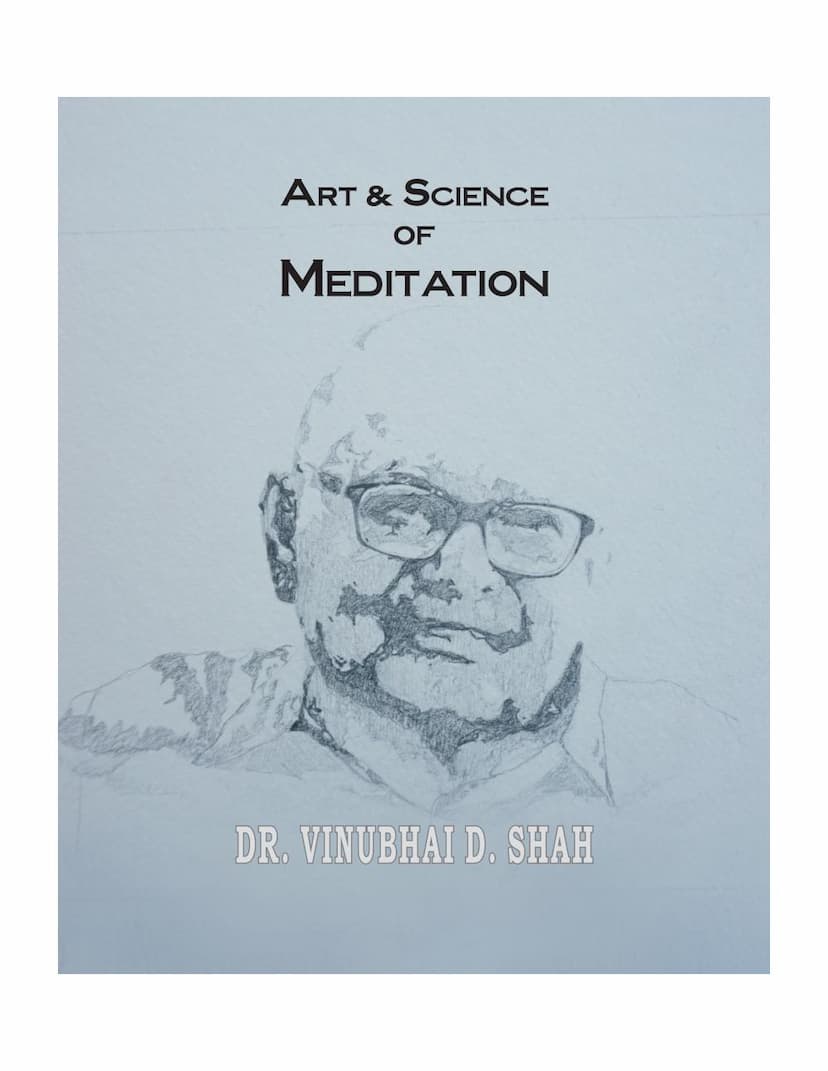Art And Science Of Meditation
Added to library: September 1, 2025

Summary
Here's a comprehensive summary of the provided Jain text, "Art and Science of Meditation" by Vinubhai D. Shah, based on the excerpt you've provided:
Overview:
"Art and Science of Meditation" by Dr. Vinubhai D. Shah is a book that explores the practice of meditation from both a psychological and spiritual perspective. Drawing on his extensive experience as a psychiatrist and his deep study of Eastern philosophies and spiritual traditions, Dr. Shah aims to provide a scientific understanding of meditation and its benefits for mental and spiritual well-being. The book emphasizes the importance of cultivating inner peace, self-awareness, and a holistic approach to life.
Key Themes and Concepts:
- Meditation as a Tool for Peace and Well-being: The core message is that meditation is a practice that can reduce tension and bring peace. It is presented not just as a spiritual pursuit but as a practical method to improve one's daily life, enhance focus, and achieve greater clarity.
- The Mind as a Double-Edged Sword: The book delves into the nature of the mind, describing it as restless and capable of being used positively or negatively. It highlights how thoughts, emotions, and perceptions, whether positive or negative, have a direct impact on our physical and mental health, often recorded in the brain's limbic system.
- Holistic Approach: Dr. Shah advocates for a holistic approach to understanding oneself and the universe. He stresses that science, philosophy, and spiritual practices are interconnected and should be viewed in harmony.
- Patanjali's Eight Stages of Yoga: The book systematically explains the eight limbs of Patanjali's Yoga (Yama, Niyama, Asana, Pranayama, Pratyahara, Dharana, Dhyana, Samadhi) as a scientific framework for controlling the mind and achieving self-realization.
- Yama and Niyama: Focus on ethical and moral guidelines for positive mental health and controlling negative thoughts.
- Asana and Pranayama: Essential for physical and mental fitness to support the journey of self-realization.
- Pratyahara: The withdrawal of the senses from external distractions, emphasizing detachment from results.
- Dharana: Concentration on the present moment and task, fostering focus and presence.
- Dhyana: Contemplation and objective analysis of oneself, leading to self-awareness and the resolution of weaknesses.
- Samadhi: The state of liberation and reunion with the divine, achieving freedom from suffering.
- The Nature of the Soul (Atman): The book explores the concept of the soul (Atman) as an eternal, indestructible, and divine essence possessing immense energy, intelligence, and consciousness. It emphasizes that realizing the soul's qualities is the ultimate goal of life and can be achieved through deep meditation and concentration.
- Jain Philosophy: A significant portion of the book is dedicated to explaining the core principles of Jainism, including:
- Dualistic Personality: The belief that a person has both material and spiritual aspects, with the soul bound by karmic particles.
- Imperfection due to Karma: Human imperfection stems from karmic bondage, but perfection is attainable through spiritual nature and control of senses and thought.
- Individual Responsibility: Each person is solely responsible for their actions and their consequences, with no external divine intervention.
- No Creator God: Jainism does not attribute the creation of the universe to a supreme being, although it acknowledges the existence of enlightened souls considered gods.
- Ahimsa (Non-violence): Highlighted as the highest ethical principle, extending to all living beings, and forming the basis for a vegetarian diet.
- Anekantavada (Non-absolutism): The principle of understanding truth from multiple perspectives, emphasizing inclusiveness and tolerance of different viewpoints.
- Interfaith and Philosophical Comparisons: The book touches upon meditation and the concept of the soul across various religions and philosophies, including Hinduism, Buddhism, Christianity, Islam, Judaism, Sikhism, Taoism, and Baháʼí Faith, drawing parallels and distinctions.
- Scientific Exploration: Dr. Shah integrates scientific understanding, referencing the brain's functioning and the potential of the mind to transcend its physical limitations. He also alludes to scientific research on meditation, like that of Maharishi Mahesh Yogi, and the potential connection between ancient yogic practices and modern scientific theories (e.g., Patanjali's Sutras and Einstein's relativity).
- Self-Realization as the Ultimate Goal: The ultimate aim of meditation and spiritual practice is presented as self-realization – understanding one's true identity as the soul and its divine nature. This journey requires dedication, patience, and the ability to overcome internal obstacles and external distractions.
Core Message:
"Art and Science of Meditation" encourages readers to cultivate inner peace and self-awareness through consistent meditation practice. It emphasizes that by understanding and controlling the mind, and by embracing principles like non-violence and truthfulness, individuals can achieve spiritual growth, lead a more fulfilling life, and ultimately realize their true divine potential. The book bridges the gap between ancient wisdom and modern understanding, making the practice of meditation accessible and relevant to contemporary life.